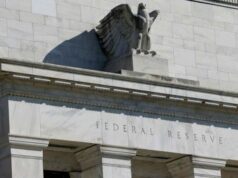Analyst poll adds to expectations of even faster Sept. inflation
By Melissa Luz T. Lopez
Senior Reporter
INFLATION likely clocked in faster in September as a strong typhoon that month pushed food prices even higher, according to a BusinessWorld poll in which analysts cited the need for more interest rate hikes from the central bank to rein in overall price pressures.
A poll among 13 economists yielded a median inflation expectation of 6.8%, which if realized would speed up from August’s 6.4% rate and soar from the three percent climb in September 2017.
The Philippine Statistics Authority (PSA) will release official inflation data on Friday. Last week, the Bangko Sentral ng Pilipinas (BSP) gave a 6.8% estimate — within a 6.3-7.1% range — while the Department of Finance pegged last month’s inflation at 6.4%.
It would also mean that price increases will be the fastest since a 7.2% rate in February 2009, according to rebasing done by the PSA using 2012 prices.

Economists said damage by typhoon Mangkhut, locally called Ompong, worsened supply issues for rice and other crops, adding to inflation pressures from an unrelenting increase in world crude prices.
“We see food inflation rising further in the near term on supply disruptions, exacerbated by Typhoon Ompong,” said Chidu Narayanan, Asia economist at Standard Chartered Bank, adding that since “September is usually harvest season in the Philippines, the impact of the typhoon is likely to weigh heavily on supply for the rest of this year.”
In mid-September, Ompong damaged swathes of farms in Benguet, Isabela and Cagayan which are among the country’s major sources of rice and vegetables. Prices of these products have been skyrocketing in the past months.
However, the central bank said a reprieve from lower electricity rates could have helped cap inflation for the month.
Headline inflation averaged 4.8% in the eight months to August, well above the 2-4% target band for 2018. The central bank now sees 2018 inflation averaging 5.2%, with the third quarter expected to have experienced the peak.
Economists polled were split on whether September inflation had already been 2018’s worst, with some noting that the BSP needs to remain hawkish in order to calm market speculation and prevent further spikes.
“We expect inflation to decline starting October 2018, although such decrease does not preclude the possibility of more rate hikes from the BSP this year,” said Guian Angelo S. Dumalagan, market economist at Land Bank of the Philippines.
He noted that the BSP might need to match tightening moves in the United States to “protect the local currency from depreciating further,” with the peso currently hovering near 13-year lows weaker than P54 to dollar.
“Despite the projected slowdown in inflation for the last three months of the year, the BSP may need to remain hawkish to snuff out brewing concerns about runaway inflation,” said Nicholas Antonio T. Mapa, senior economist at ING Bank N.V. Manila.
“More decisive, deliberate and consistent messaging will be needed from the central bank if BSP would like to rein in these concerns and look to establish its credibility as an inflation fighter.”
Emmanuel A. Leyco, economics professor at the Asian Institute of Management, believes inflation will keep rising to “up to seven percent” by December.
Ateneo de Manila University’s Alvin P. Ang also sees above-six percent inflation toward yearend.
The analysts tagged the planned shift to a regular tariff scheme for rice imports and non-monetary measures to improve crop supply as key steps to easing overall price pressures.
The BSP last Thursday fired off another 50 basis point (bp) hike in benchmark interest rates to 4-5%, taking the year-to-date increment to 150 bps in four consecutive policy meetings since May.



